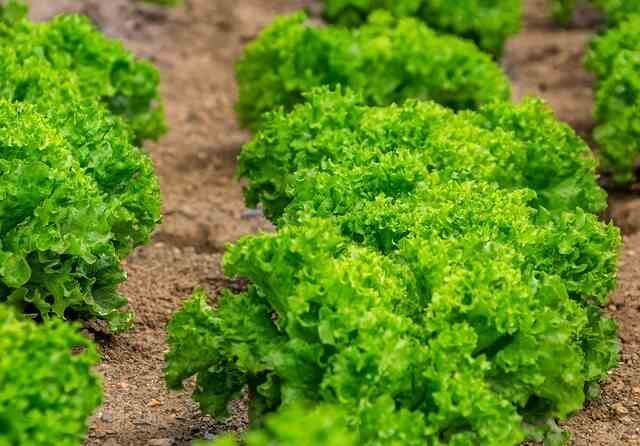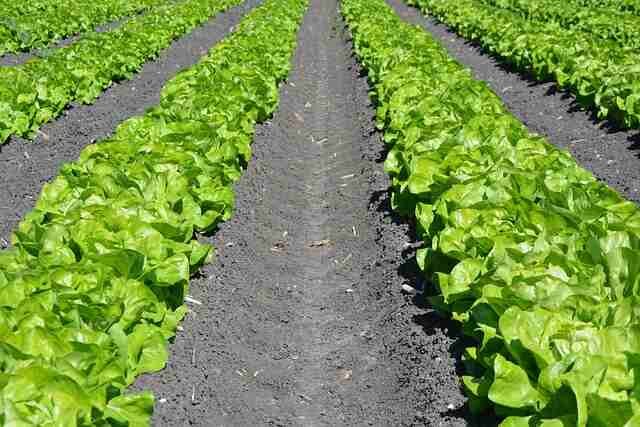If you haven’t tasted fresh homegrown lettuces, you’re missing out! In fact, lettuces offer fresh leaves for picking almost year-round! It’s a great crop for beginner gardeners, but there are a few tips you’ll need to bear in mind for the healthiest plants. If you’re a salad nut like me and want to up your lettuce-growing game, you’ve come to the right place because here come my top tips for growing perfect lettuce every time.
PLANT AT THE RIGHT TIME
Because lettuces are a cold-season crop, you can start sowing them early. They like fertile soil that holds moisture well. In the weeks before sowing, simply adding a lot of well-rotted organic matter like compost can improve your soil. About four weeks before your last frost date, direct outdoor sowing begins. You can start them indoors or under cover in a greenhouse, cold frame, or hoop house, for example, if you want to start them earlier than I do. If conceivable, develop them under some develop lights in the event that it’s extremely bleak, similar to it is here. In the winter, this is very important because there isn’t enough strong light to get them off to a good start.
So, let’s sow them! I’m using just a normal multi-purpose potting mix and filling up my pots. I’m sowing into pots like this so they take up less room, and then I can transplant them into their own little plugs once they’ve germinated. I’m scattering a very scant pinch of seeds over the surface, spacing them out if I can because it means you can let them grow on a bit longer in the pot before they go into their own little plugs or pots. To cover them, just the merest suggestion of potting mix, about a quarter inch or half a centimeter, just enough to cover them so they’re out of the light. You could also cover them with a bit of Perlite or vermiculite as well. That would work just as well. Gently firm that in and then give that a little water. These will be going under grow lights once they’ve germinated. I’ll be germinating them inside with a little bit of warmth, and then, once they’ve gotten a bit bigger and towards the end of winter, they’ll come out into the greenhouse.
Now I’d like to show you some that I sowed only one week ago which are now ready to transplant into plug trays. So let’s do that! These guys were germinated literally seven days ago and they’ve put on good growth. They were germinated inside on a windowsill, they’re leaning to one side. Now’s the time to get these into their own plug trays and have them under the grow light so they can firm up. Start by filling our plug tray; again, I’m simply using multi-purpose compost. Tamp it down with my trusty little stick here to help. I’m going to carefully ease them out of the pot. I’ll probably just take about half of these. If you can, get as much of the original potting mix as you can, and then just poke them in like that. There we are. You can set them a little bit lower than they are here to help support them. This one’s come out with none of its original potting mix, but the long tap root there. Try and feed that down carefully as much as possible so it’s somewhat supported. These are very delicate seedlings but very resilient too! As long as you don’t damage the main root or stem, they’ll do just fine for you.
They’re all transplanted now into plug trays and I wanted to show you this one which I transplanted one week ago. These were watered, they all flattened down, and then they sprung back up the next day and have grown on. This shows you how quickly they can bulk out, even in this cooler weather! Once they’ve filled their plug trays, they’re good to go outside. At the start of the season, you can help them along by covering individual plants with bottomless milk bottles or clear plastic bottles, or simply spreading out a row cover of fleece to keep the chill off and help them acclimatize. They’ll be planted 9 to 12 inches (23 to 30 centimeters) apart in both directions to give them plenty of room. I’ll make further sowings every three or four weeks as necessary. The big problem comes in mid-summer with the heat, but more on that in a minute…

AVOID BOLTING
Shooting is just the extravagant word for whenever crops blossom rashly before you’ve gotten an opportunity to gather them. Most of the time, this turns the crop into something that can’t be eaten. This is especially true for lettuce, whose tough leaves turn into a bitter, milky sap that makes you want to cry. As of now, lettuces are great for one thing as it were: adding to the compost pile by digging up! Lettuces, which are grown during the cool season, frequently bolt in hot, dry conditions. Keep your lettuces all around watered in dry, sweltering climate. You can likewise have a go at developing them in conceal, either by gear up some shade material or by developing them in the shade of taller harvests like tomatoes, corn, or climbing beans. Also, keep the area around your lettuces well-weeded so they don’t have to compete for the soil moisture that’s available.
Germination can also be a bit erratic in hot weather, and there are two ways around this: you can simply germinate your lettuces indoors (especially if you’ve got air conditioning in a hot climate), and then once they’ve germinated, plant them outside. The other option (which is what I do) is to make your drill to sow them into, then water along it, let it drain, water along it again, and then sow your seeds and fill them over. This way, you’ve got a nice, cool, wet cushion around your seeds to help them germinate.
Lettuces are generally pretty trouble-free, but there are two arch-nemeses that might hamper your efforts if left unchecked: slugs and aphids.

COMBAT PESTS
Let’s tackle those horrid slugs first. How often have you got your lettuce leaves only to discover holes munched into them, and then there’s a great big slug under there? That’s happened to me on more than one occasion, and it’s not very nice, is it?! So this is what I do now: I set up slug traps. I simply sink a shallow tray or pot (this is a ramekin) into the ground at ground level and then fill it up with beer. The slugs love the stuff! They go into the slug traps, drown, and come to a sticky (but probably quite happy) ending. You need to empty them out and refill regularly. You don’t need to use expensive beer; it doesn’t even have to be alcoholic! But it’s important that you check them and empty them regularly. Other ways to keep slugs in check are to make sure they’re properly spaced, remove all weeds and any bits of debris lying around so there aren’t any hiding places for them, and check any lurking places and pick out any slugs you find. The great thing about seeking slugs and using beer slug traps is that they won’t harm any other wildlife. It’s controlling pests naturally, working with nature, and not leaving a footprint on the land, which I think is really important.
Now, the other common pest of lettuces is aphids. The best way to control aphids, whether it’s black bean aphid, woolly aphid, or rose aphid in the case of lettuces, is to attract their predators: things like hoverflies, lacewings, ladybirds or ladybugs, and tiny non-stinging parasitic wasps. The best flower for this, in the case of lettuces, is alyssum. Alyssum is a beautiful, sweet-perfumed annual flower that attracts the parasitic wasps and hoverflies. The hoverflies are attracted to the nectar, then lay their eggs, and the larvae go on to eat the aphids in prodigious quantities. Organic growers in California often grow alyssum amongst their lettuces, dedicating as much as 10 percent of their surface area to alyssum to help with pest control. This is something I think I will try this coming growing season. There are lots of other plants that will attract beneficial bugs like calendula, poached egg plant, and zinnia. It’s really good practice to grow them among your vegetables for this reason.
HARVEST SMART
When it comes to harvesting your lettuces, you’ve got two broad types: loose leaf lettuces, which don’t form a tight close-knit head, and head-forming lettuces, that do. Both require slightly different harvesting techniques. With loose leaf lettuces, you can just cut them at the base and harvest the whole head, but a smarter way is to harvest individual leaves at a time, taking them from the outside of the cluster and leaving the central ones to grow on. These have been overwintered, and I’ll demonstrate that: just click them off between your forefinger and your thumb, like that. Then you’ve got enough of these central rosetta leaves to grow on, and those will grow bigger. You can take them from the outside again.
With head-forming lettuces, you simply pull up the entire plant or cut it off at the base. Another clever way is to take off a few of the outer leaves while the plant is still quite young. Once you’ve done that a few times, leave the plant to grow on and produce that nice fulsome head. Don’t leave it too long to harvest your heading lettuces; otherwise, the leaves will become quite tough. Once you’ve harvested your leaves, especially in the summer, plunge them into a bucket or sink of cold water. This serves two purposes: it washes the leaves, getting rid of any residual bits of soil or grit, and in the heat of summer, it cools the leaves down, which is important so they don’t go all floppy. Once they’ve soaked for at least 5-10 minutes, lift them out, then flick them dry like that, or even better, use a salad spinner. Then simply pack the leaves into plastic bags, roll them over, and pop them into the salad compartment of your refrigerator, where they should stay fairly fresh for up to a week.



